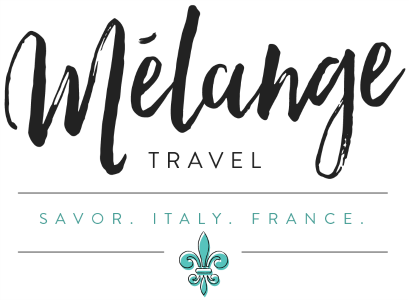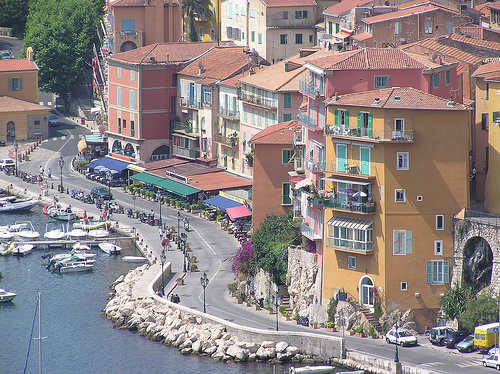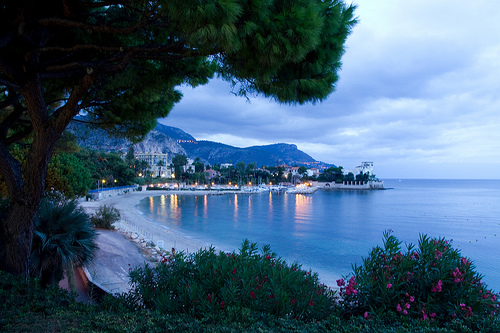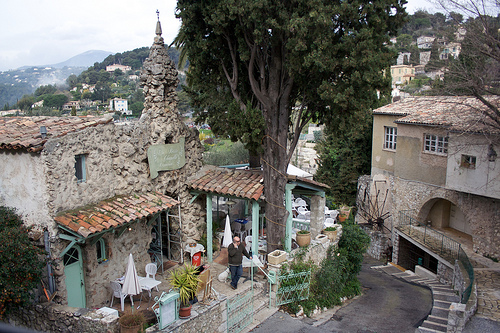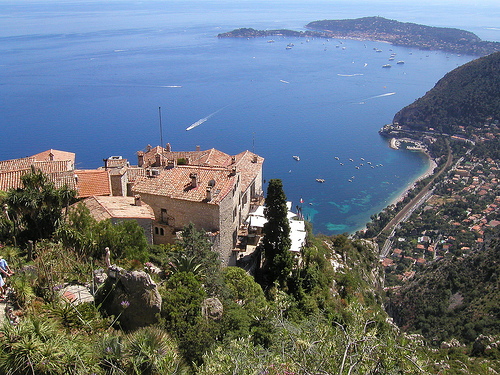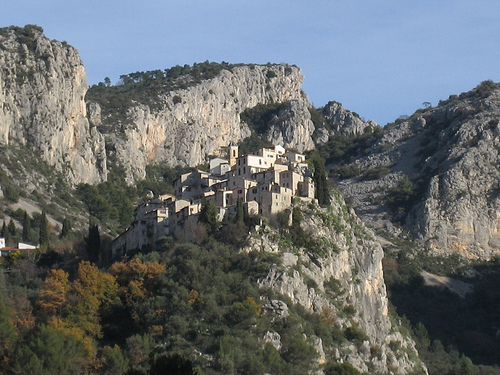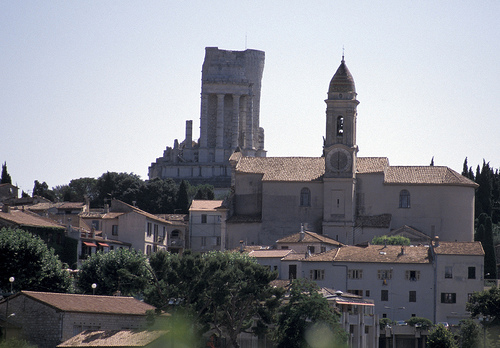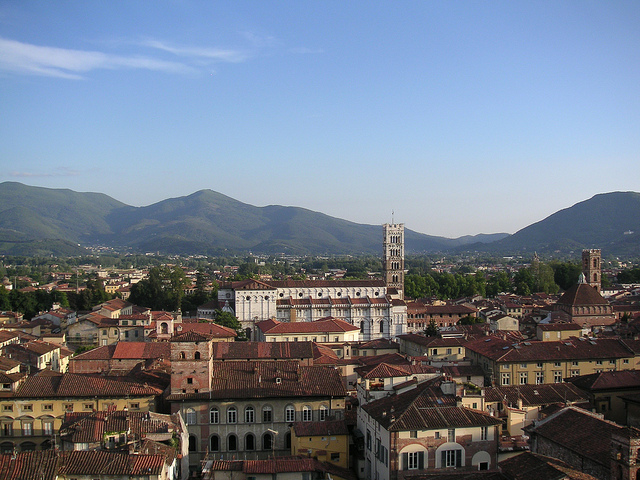You’ve seen the gorgeous pictures of the French Riviera, boasting its lofty cliffs that overlook the sparkling blue water and the many yachts and sailboats that visit the ports each year. To say the least, the French Riviera is breathtaking. It is one of the most well-known resort areas and coastal regions in the world.
The sailboats and yachts are proof of this as their sterns’ reveal the names of their home, which come from all over the world! The mild-climate and colorful landscape have made the French Riviera a popular vacation destination. Year-round, tourists visit the famous towns along the coastline—Nice, Monte Carlo, St. Tropez, Cannes—and indulge in the lush beaches, museums, and overall glamour of the area. However, there is more to the French Riviera. Charming small towns and villages in the hillside are just beckoning you to explore. Check out these six tiny towns of the French Riviera!
Beaulieu-sur-Mer
South of Monaco is the small town of Beaulieu-sur-Mer, which means “beautiful place on the sea” in French. This town is said to have one of the prettiest marinas on the Cote d’Azur. Take advantage of the numerous restaurants on this harbor, and dine al fresco while enjoying the lovely view of the boats lined up in the marina.
In Beaulieu-sur-Mer you can experience a little bit of Greece by visiting the Villa Kérylos, which is a reproduction (built in 1908) of a fifth century B.C. Athenian home. It is fully furnished and decorated, and is even available for events and weddings. Admission is 8 euro.
If you want to spend a day relaxing on the beach, head to the beach at Baie des Fourmis. Although it is near the center of town, this beach is isolated enough for a serene afternoon by the sea. At the end of the day, dress your best, grab your passport, put on your poker face, and head to Casino Beaulieu-sur-Mer for a night on the town!
Saint Jean-Cap-Ferrat
South of Beaulieu-sur-Mer, on the small peninsula, is the town of Saint Jean-Cap-Ferrat. Here, you’re bound to bump into someone famous since Saint Jean-Cap-Ferrat is a popular winter getaway for the rich and famous. Walking lovers rejoice! This is the perfect town to explore by foot with its 14 km coastal path hike. The path is divided into three parts: tour of Cap Ferrat, Pine Forest, and the Maurice Rouvier walk, which will actually lead you into Beaulieu!
If you have a soft spot for furry critters, visit the zoo, which is home to over 300 animals. Saint Jean-Cap-Ferrat is the home of the beautiful palace, Grand Hôtel du Cap-Ferrat, which is surrounded by a colorful garden. Even if you can’t afford to spend the night in the luxurious suites, you can still enjoy dinner at the newly reopened restaurant.
And if you really want to see a glamorous building, visit the Villa Ile de France. This palace is furnished with the treasures of Béatrice Ephrussi de Rothschild including various works of art and furniture. When you finish with the interior of the mansion, go outside and wander through the seven different gardens, each with its own theme: Florentine, Spanish, and Japanese, the garden of muses, the garden of lapidary, and the rose garden.
With all of the walking and sightseeing, you’re bound to work up an appetite. Just walk along the port and choose a cozy restaurant of your choice for a delicious meal while overlooking the water. For the beach lovers, there are three different beaches to choose from in Cap Ferrat. At the base of the cliffs and just a five to ten minute walk from the port is Paloma beach.
Because of the protection from the cliffs, this beach doesn’t get as much wind, but it also has less sun in the afternoon. Passable beach is northwest of the peninsula, near the Office of Tourisme and the zoo. If you enjoy being around other beach-goers, head to the popular Cro de Pei Pin beach, which is north of the port at the Anse Lilong bay.
Vence
Vence is known as the “City of Art.” Artists flock to this little town on the Riviera, using the previous geniuses—Dufy, Matisse, Chagall, Dubuffet—as inspiration for their artwork. Visit one of the many galleries, or simply wander around and admire the sculptures and buildings around the town. Take a stroll down Avenue Henri Matisse and explore the Chapelle Matisse (also known as the Chapelle du Rosaire des Dominicanes de Vence). If you’re lucky, you may even get a chance to visit an outdoor art exhibit.
This little town is not just about art; it has a great medieval history as well. There are five medieval ports that lead into Vence: Portail Levis, Porte du Peyra, Tour-Porte du Signadour, Porte du Faubourg ou Pontis, and Porte d’Orient. Stop by the Office de Tourisme and pick up a map for a self-guided walking tour. Throughout Vence, there are pale-grey numbered panels that describe the historical sites on the Visite de la Cité Historique. Don’t miss the Fountaine de la Foux, which supplies mineral water from La Foux river. Visitors have been known to take a jug-full of the pure water!
Eze
Built up by the Saracen pirates in the thirteenth century, Eze became one of the main “Villages Perche.” The Villages Perche got their name because of the way they appeared to be sitting on the cliffs or glued to the sides of the mountains. Because it was so hard to reach, Eze was abandoned until the 1920’s when the proper technology allowed for road systems and access to water.
Now, visitors can walk through the streets, stopping in shops that carry artisan crafts. With the warm climate, Eze has beautiful vegetation of bananas, dates, and carob trees. There’s vegetation that is even more vibrant in the exotic botanic garden Jardin Exotique Panorama that you can visit for twelve euro. There are two perfumeries in Eze—Galimard and Fragonard—and with a map from the Office de Tourisme, you can save 10% off your purchase.
Peillon
Truly get away from the tourists and embark on a medieval adventure with a trip to Peillon. No cars are allowed in Peillon (probably because they wouldn’t be able to fit through the narrow streets); therefore, visitors must park at the plaza, which is at the entrance to the village. Peillon doesn’t have the typical souvenir shops, just a few hotels and restaurants outside the village.
At the plaza outside Peillon is the only gift shop, La Maiouneta. Here you can find produce, ceramics, and other gifts for passing tourists. The stone houses seem as though they are built into the rock, lining the narrow streets. You’ll be busy all day touring the medieval buildings.
La Turbie
La Turbie is known as the “balcony” of the French Riviera, overlooking the Principality of Monaco. In La Turbie, you will find the pride of the town, the Trophée d’Auguste (also known as the Trophée des Alpes) built by Emperor Augustus in 13 B.C. It was a symbol of the unity and power of the Roman Empire. Now, you can visit this 35-meter tall statue and the adjacent museum and learn more about the history. Admission is 5 euro for adults and 3.50 euro for 18-25 year olds.
Visit the 18th century Saint Michel’s Church, which is a baroque church that was built using the ruins from the Trophée des Alpes. It is decorated with art from the 15th century, and is open every day until 6 pm. Nature lovers can wander through the Grand Corniche Nature Park, taking in the view from the top, while shoppers can enjoy exploring the central part of the village along the Moyenne Corniche Highway.
- Considering a visit to the French Riviera? Click here to see how I can help with your travel plans.
Written by : Laura Photo Credits: hillsieboy / jcoterhals / sara maternini / exfordyswife / bousinka / tyb
